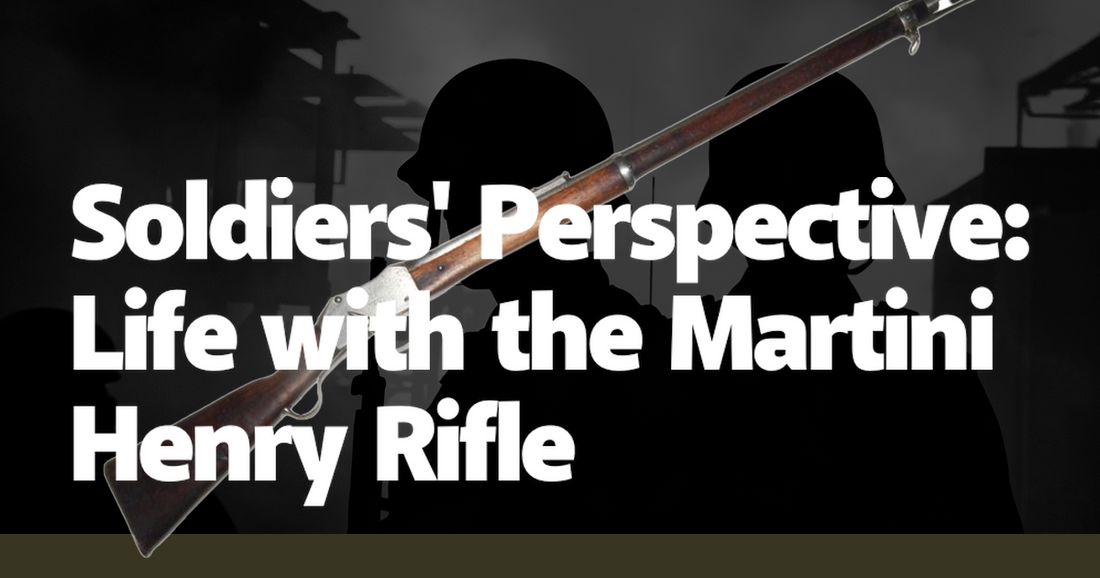The Martini-Henry rifle, introduced in the British Army in 1871, was a game-changer for soldiers on the battlefield. Its single-shot, lever-action mechanism represented a significant leap from the muzzle-loading rifles that had previously dominated military arsenals. For the soldiers who carried it, the Martini-Henry was not just a weapon, but a companion that could mean the difference between life and death. The rifle's .577/450 caliber cartridge was powerful enough to stop an enemy in his tracks, and its range of up to 1,200 yards offered a tactical advantage that was unprecedented at the time. The psychological comfort of carrying such a formidable weapon cannot be overstated; it imbued soldiers with a sense of confidence and superiority.
However, the Martini-Henry was not without its drawbacks. The rifle was notoriously heavy, weighing in at around nine pounds, which could be burdensome during long marches or in the heat of battle. Soldiers often had to carry additional ammunition, cleaning kits, and other gear, making their load even heavier. Anecdotes from veterans reveal that the weight of the rifle could become particularly grueling during extended campaigns in harsh environments, such as the arid landscapes of colonial Africa or the rugged terrains of Afghanistan. Despite these challenges, the rifle's reliability in combat situations often outweighed its cumbersome nature.
One of the most significant aspects of life with the Martini-Henry was the rigorous training required to master its use. Soldiers had to become proficient in loading, aiming, and firing the rifle under various conditions. The lever-action mechanism, while innovative, demanded a certain level of dexterity and strength. Training drills often included rapid-fire exercises, where soldiers were expected to maintain a high rate of fire while accurately hitting their targets. This training was not just about muscle memory; it was about instilling a sense of discipline and precision that would serve soldiers well in the chaos of battle.
The Martini-Henry also had a psychological impact on the soldiers who wielded it. Knowing that they possessed a weapon capable of inflicting significant damage on the enemy provided a morale boost that was invaluable in combat situations. This sense of empowerment was particularly important in colonial conflicts, where British soldiers often found themselves outnumbered by indigenous forces. The rifle's stopping power and range allowed soldiers to engage the enemy from a distance, reducing the risk of close-quarters combat and increasing their chances of survival.
Despite its advantages, the Martini-Henry was not infallible. The rifle was prone to fouling after prolonged use, particularly when firing the black powder cartridges that were standard at the time. Soldiers had to be diligent about cleaning their rifles to prevent jams and misfires, which could be fatal in the heat of battle. Stories from veterans often highlight the importance of maintenance, with some recounting how they would spend hours meticulously cleaning their rifles after a skirmish. This attention to detail was a testament to the soldiers' dedication and the critical role the Martini-Henry played in their survival.
The rifle also left its mark on the soldiers in more ways than one. The recoil from firing the powerful .577/450 cartridge could be brutal, especially during extended engagements. Many soldiers bore bruises and shoulder injuries as a result of the rifle's kick. Despite this, the overwhelming sentiment among veterans was that the rifle's benefits far outweighed its physical toll. The sense of security and effectiveness it provided in combat situations was a trade-off that most soldiers were willing to accept.
The Martini-Henry rifle also played a significant role in shaping military tactics of the time. Its long-range capabilities allowed for new strategies in both offense and defense. Soldiers could now engage the enemy from greater distances, making traditional frontal assaults less effective. This shift in tactics required a corresponding change in training and battlefield planning. Commanders had to rethink their approaches, often opting for more strategic positioning and the use of cover. The rifle's impact on military doctrine was profound, influencing not just the British Army but also other military forces around the world.
In retrospect, the Martini-Henry rifle was more than just a tool of war; it was a symbol of a transformative era in military history. For the soldiers who carried it, the rifle was a source of both pride and challenge. It demanded respect and care, but in return, it provided a level of firepower and reliability that was unmatched at the time. The stories and experiences of those who lived and fought with the Martini-Henry offer a compelling glimpse into the life of a soldier during a pivotal period in military history. Their perspectives remind us of the complexities and sacrifices inherent in the profession of arms, and the enduring impact of technological advancements on the art of warfare.

